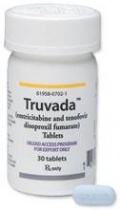CJEU on criteria for products that are "protected by a basic patent in force” in the SPC Regulation for Medicinal Products
03-08-2018 Print this page
A product composed of several active ingredients with a combined effect is ‘protected by a basic patent in force’ within the meaning of Article 3(a) of the SPC Regulation for Medicinal Products where, even if the combination of active ingredients of which that product is composed is not expressly mentioned in the claims of the basic patent, if, from the point of view of a person skilled in the art and on the basis of the prior art at the filing date or priority date of the basic patent: (1) the combination of those active ingredients must necessarily, in the light of the description and drawings of that patent, fall under the invention covered by that patent, and (2) each of those active ingredients must be specifically identifiable, in the light of all the information disclosed by that patent.
Gilead is a pharmaceutical company which markets an antiretroviral medicinal product indicated for the treatment of persons infected with HIV, under the name TRUVADA. That medicinal product contains two active ingredients, tenofovir disoproxil (‘TD’) and emtricitabine. It was granted a marketing authorisation (‘MA’) on 21 November 2005 by the European Medicines Agency (EMA). Gilead is the holder of the European patent (UK) EP 0 915 894 (‘the basic patent at issue’). That patent expired on 24 July 2017. The description of the invention contained in that patent indicates that the patent covers, in general terms, a series of molecules which are helpful in the therapeutic treatment of a number of viral infections in humans and animals, in particular HIV. In 2008, Gilead was granted SPC SPC/GB05/041 on the basis of claim 27 of the basic patent and the MA obtained for Truvada.The SPC relates to a ‘composition containing [TD], optionally in the form of a pharmaceutically acceptable salt, hydrate, tautomer or solvate, together with Emtricitabine’. The applicants in the main proceedings intended to market generic versions of Truvada on the UK market once the basic patent had expired and brought proceedings before the referring court disputing the validity of that SPC.
The applicants in the main proceedings argue essentially that, in order for Article 3(a) of the SPC Regulation for Medicinal Products to be satisfied, the product in question must be ‘specified in the wording of the claims’ and, where the claim contains a functional definition, it must ‘relate, implicitly but necessarily and specifically’ to that product. They observe that emtricitabine is not specified anywhere in the wording of claim 27 and that the words ‘other therapeutic ingredients’ do not specify any active ingredient, whether structurally, functionally or otherwise. Gilead asserts that in order for Article 3(a) to be satisfied, it is necessary and sufficient that the product in question falls within the scope of protection of at least one claim of the basic patent applying the Extent of Protection Rules. It takes the view that the combination of TD and emtricitabine does fall within the scope of protection of claim 27 of the patent under Article 69 of the EPC and under the Protocol on interpretation. Therefore, the referring court decided to refer the following question to the Court of Justice for a preliminary ruling: ‘What are the criteria for deciding whether “the product is protected by a basic patent in force” in Article 3(a) of the SPC Regulation for Medicinal Products?’
The CJEU answers the question as follows:
The answer to the question referred is that Article 3(a) of Regulation No 469/2009 must be interpreted as meaning that a product composed of several active ingredients with a combined effect is ‘protected by a basic patent in force’ within the meaning of that provision where, even if the combination of active ingredients of which that product is composed is not expressly mentioned in the claims of the basic patent, those claims relate necessarily and specifically to that combination. For that purpose, from the point of view of a person skilled in the art and on the basis of the prior art at the filing date or priority date of the basic patent:
– the combination of those active ingredients must necessarily, in the light of the description and drawings of that patent, fall under the invention covered by that patent, and
– each of those active ingredients must be specifically identifiable, in the light of all the information disclosed by that patent.
IPPT20180725, CJEU, Teva v Gilead

















